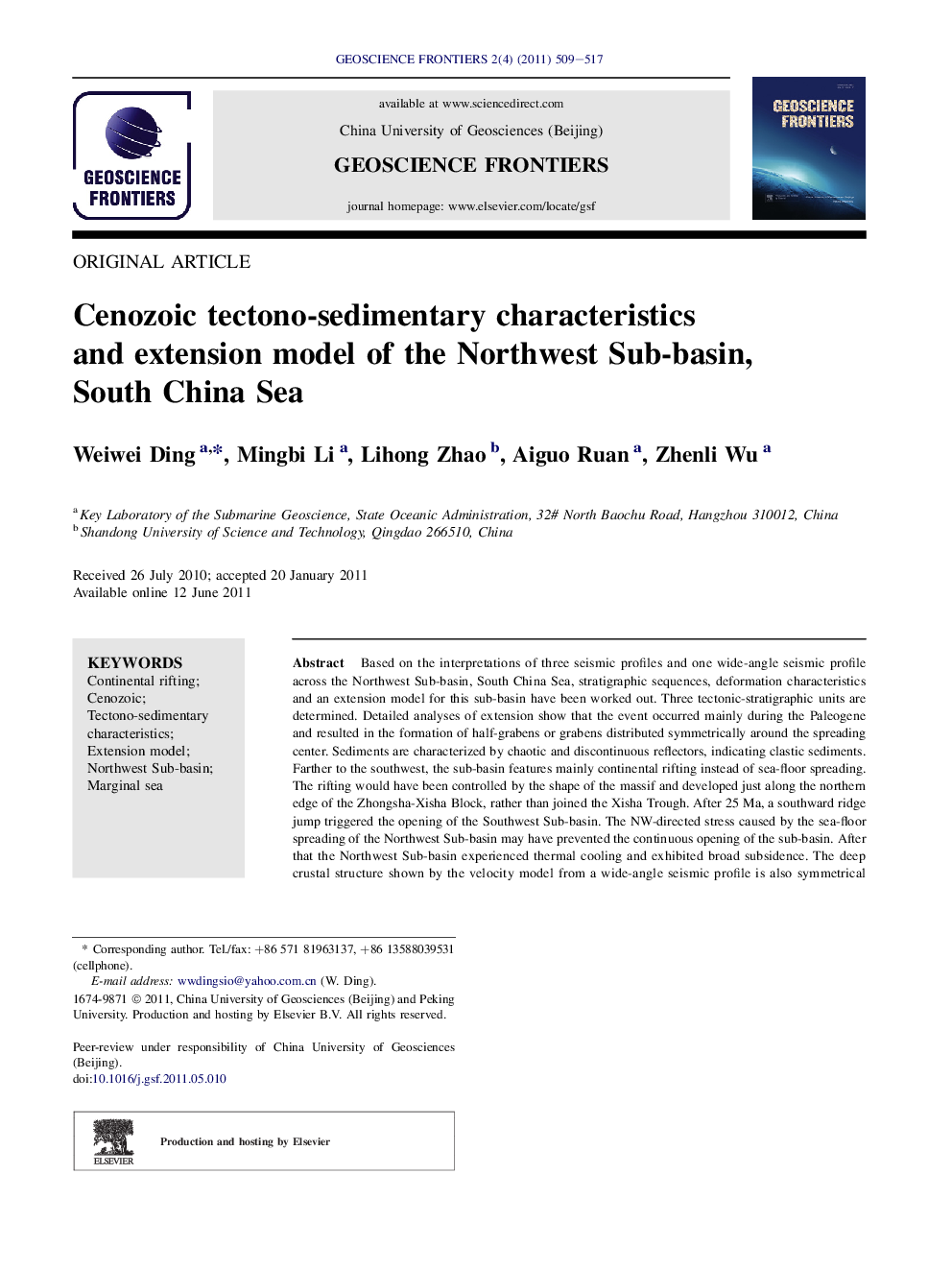| Article ID | Journal | Published Year | Pages | File Type |
|---|---|---|---|---|
| 4681807 | Geoscience Frontiers | 2011 | 9 Pages |
Based on the interpretations of three seismic profiles and one wide-angle seismic profile across the Northwest Sub-basin, South China Sea, stratigraphic sequences, deformation characteristics and an extension model for this sub-basin have been worked out. Three tectonic-stratigraphic units are determined. Detailed analyses of extension show that the event occurred mainly during the Paleogene and resulted in the formation of half-grabens or grabens distributed symmetrically around the spreading center. Sediments are characterized by chaotic and discontinuous reflectors, indicating clastic sediments. Farther to the southwest, the sub-basin features mainly continental rifting instead of sea-floor spreading. The rifting would have been controlled by the shape of the massif and developed just along the northern edge of the Zhongsha-Xisha Block, rather than joined the Xisha Trough. After 25 Ma, a southward ridge jump triggered the opening of the Southwest Sub-basin. The NW-directed stress caused by the sea-floor spreading of the Northwest Sub-basin may have prevented the continuous opening of the sub-basin. After that the Northwest Sub-basin experienced thermal cooling and exhibited broad subsidence. The deep crustal structure shown by the velocity model from a wide-angle seismic profile is also symmetrical around the spreading center, which indicates that the Northwest Sub-basin might have opened in a pure shear model.
